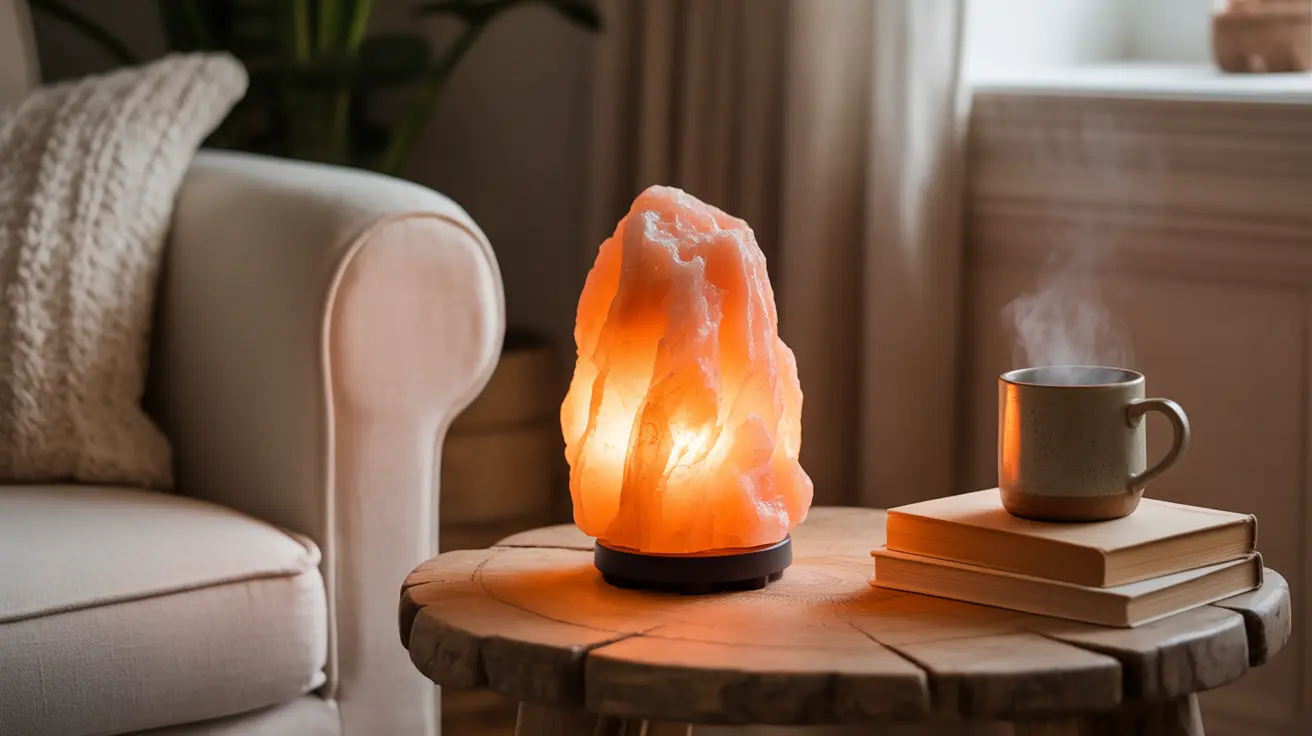Himalayan salt lamps have gained significant popularity as decorative pieces and alleged health-promoting devices. These pink-hued crystalline fixtures, carved from salt mines in Pakistan, have sparked considerable interest among those seeking natural ways to improve their indoor environment. But what do salt lamps actually do, and can they deliver on their promised benefits?
In this comprehensive guide, we'll examine the scientific evidence behind salt lamp claims and help you understand what these popular items can and cannot do for your health and living space.
Understanding Salt Lamp Properties
Himalayan salt lamps are large chunks of pink salt with a light bulb placed inside. Their distinctive pink or orange color comes from trace minerals present in the salt, including iron oxide. When lit, they create a warm, ambient glow that many find aesthetically pleasing.
Physical Characteristics
These lamps typically weigh between 5 and 25 pounds and range in color from light pink to deep orange. The salt is hygroscopic, meaning it can attract water molecules from the surrounding air. This property is central to many claims about their potential benefits.
Common Claims vs. Scientific Reality
Air Purification Claims
While salt lamps are often marketed as natural air purifiers, scientific evidence supporting this claim is limited. The hygroscopic properties of salt may allow the lamp to attract some water molecules from the air, but this effect is minimal and localized.
Negative Ion Generation
One of the most frequent claims about salt lamps is their ability to generate negative ions. However, studies have shown that at room temperature, salt crystals do not produce significant amounts of negative ions. Any ions produced would be insufficient to affect air quality in a meaningful way.
Potential Benefits of Salt Lamps
Mood and Atmosphere
The most scientifically supported benefit of salt lamps is their ability to create a relaxing atmosphere. Their warm, amber glow can help create a calming environment, similar to the effects of other soft lighting sources.
Sleep Environment
The dim, orange light produced by salt lamps contains less blue light than regular lighting, making them potentially beneficial as evening lighting options. This may help maintain natural circadian rhythms when used before bedtime.
Safety Considerations
Electrical Safety
When using a salt lamp, ensure proper wiring and bulb installation. The hygroscopic nature of salt can potentially cause corrosion, so regular inspection of electrical components is important.
Placement and Maintenance
Keep salt lamps on waterproof surfaces, as they may release moisture. Clean them periodically with a slightly damp cloth, being careful to unplug the lamp first.
Frequently Asked Questions
What do Himalayan salt lamps actually do for air quality and health?
While salt lamps can attract some moisture from the air due to their hygroscopic properties, scientific evidence doesn't support significant air purification benefits. Their main verified effect is creating a pleasant ambient atmosphere.
Can using a salt lamp help improve mood, sleep, or reduce allergy symptoms?
The warm, dim light may help create a relaxing environment conducive to better mood and sleep. However, there's no scientific evidence supporting their use for allergy symptom relief.
How safe is it to leave a Himalayan salt lamp on overnight?
Salt lamps are generally safe to leave on overnight when properly maintained and connected to appropriate electrical components. However, regular inspection is recommended due to potential salt corrosion.
Do salt lamps really produce negative ions that purify the air?
Scientific research indicates that salt lamps do not produce significant amounts of negative ions at room temperature, and any ions produced would be insufficient to affect air quality meaningfully.
What precautions should I take when using a Himalayan salt lamp in my home?
Place the lamp on a water-resistant surface, regularly inspect electrical components, keep it away from moisture sources, and clean it carefully with a slightly damp cloth while unplugged. Ensure proper wiring and bulb installation.




